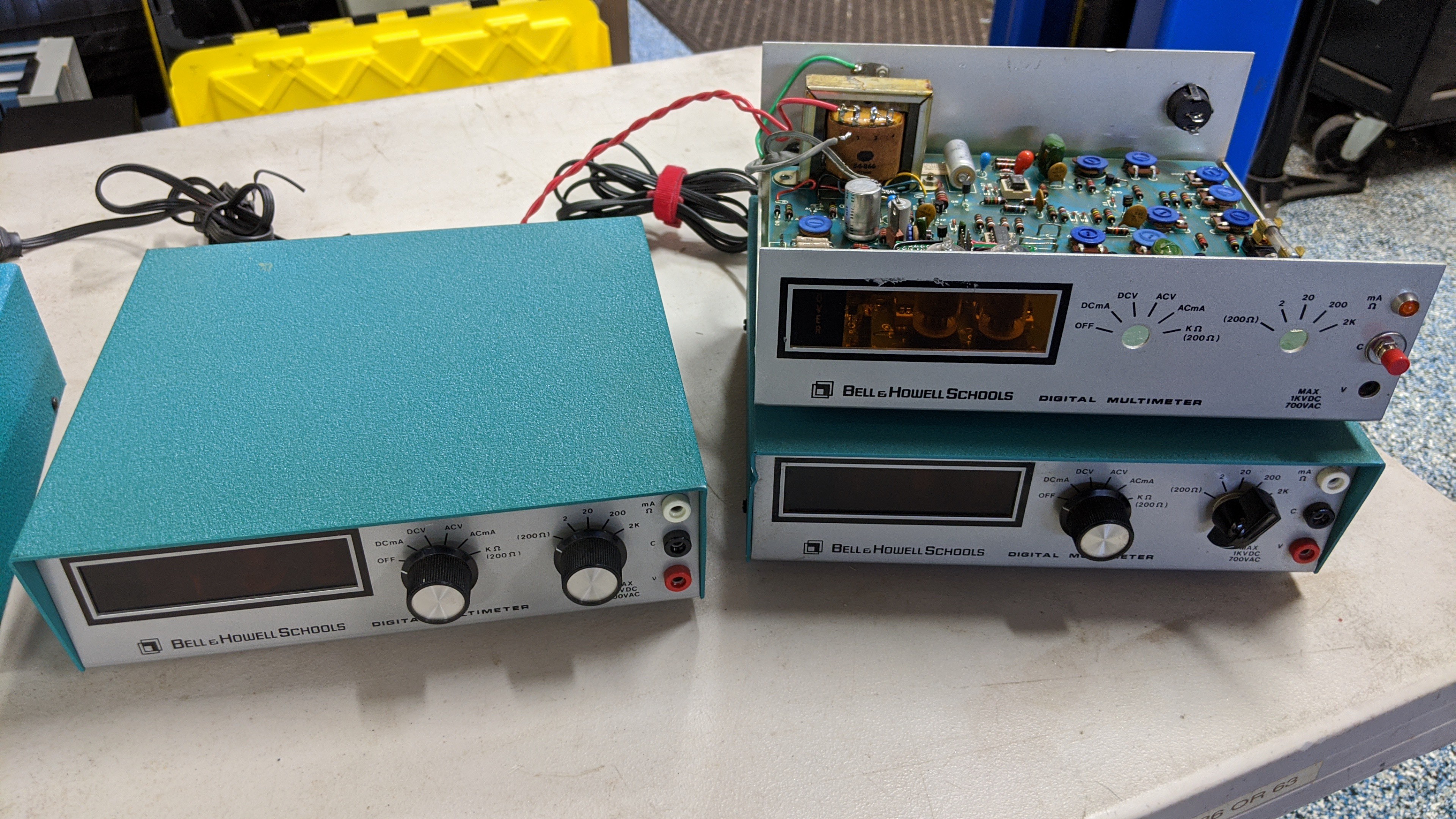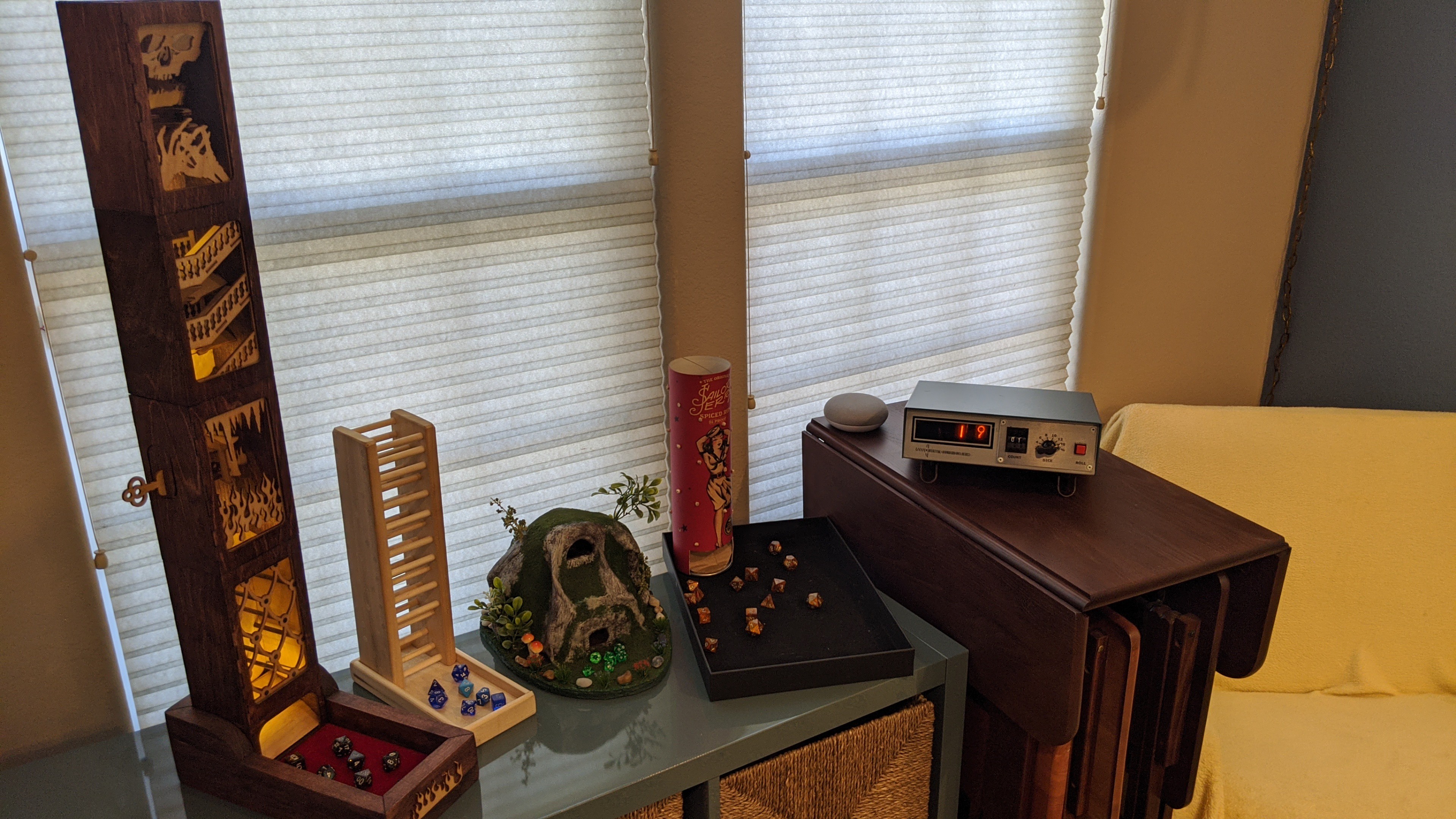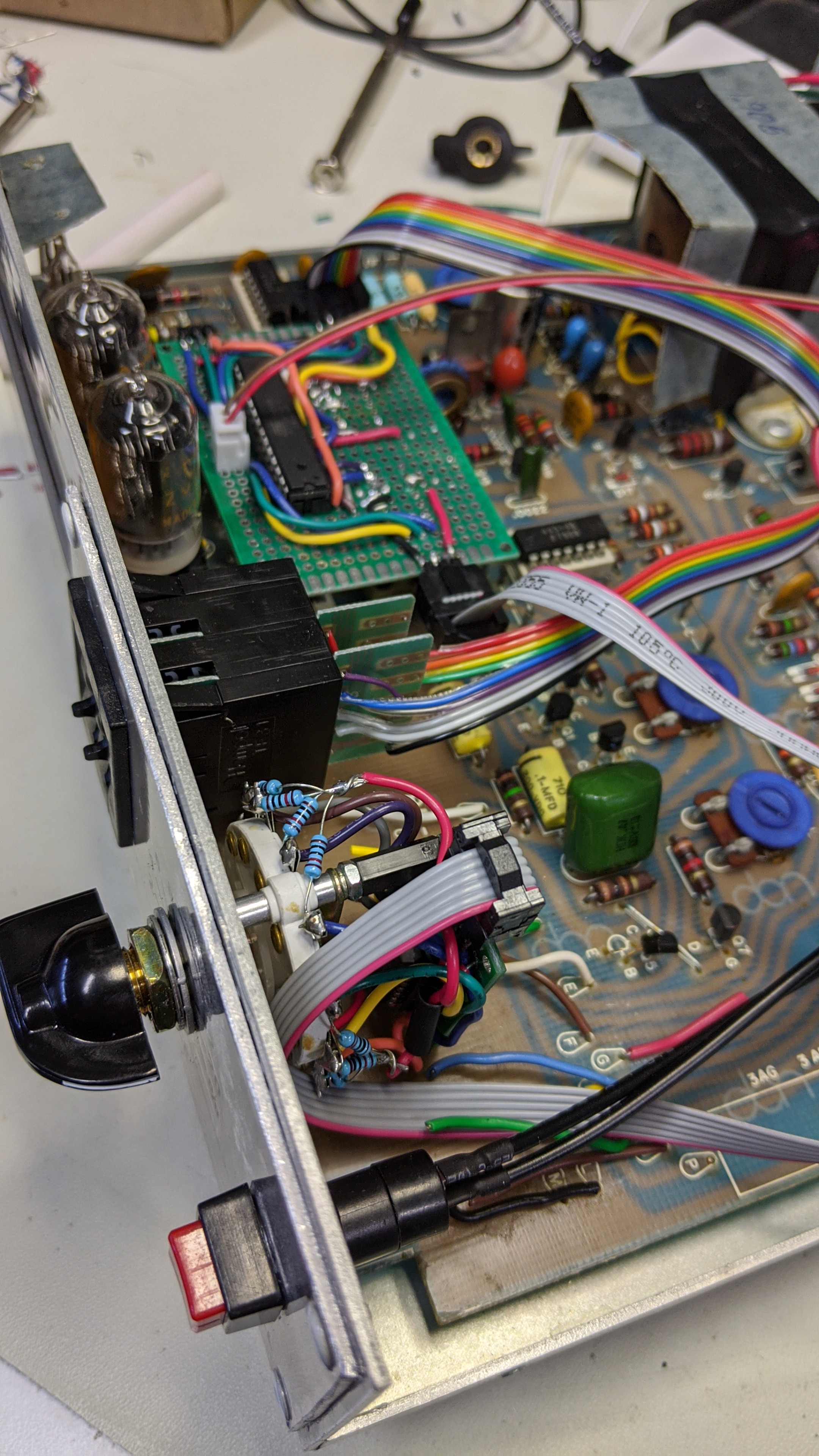This project has been completed. If you are interested to read about additional features I am adding with subsequent builds of this concept, like and follow the latest project: 1979 "Heathkit" D&D Digital Dice Tower
This project implements the function of a Dungeons and Dragons dice tower and dice using a retro digital multimeter with nixie tube display. The user selects a number of dice using the two digit thumb-wheel switches, then selects the dice type (2 sided, 4 sided, 6 sided, 8 sided, 10 sided, 12 sided, 20 sided, or 100 sided) using a rotary switch, and finally presses the roll button to get a result. The device applies the GNU AVR lib C pseudo random rand() function, calculates the result, and displays it on the nixie tube display. The user can then re-roll by pressing the roll button again, or change the count and/or dice and roll a different set of die. It's that simple to use.
This project represents several things l love.
- It's Dungeon & Dragons: I've been playing D&D since 1978. Thus 1978 is in the project name and it's a resto-mod build based on user interface technology from that same time frame.
- It recycles: It's fun reusing old parts and technology. Besides being "the right thing to do" for reasons we already know, "Recycling" requires disassembly and reverse engineering. It's fun to take things apart and figure how they work. I often learn things applicable to other projects in the process. "Recycling" also requires a different approach to design and implementation. It defines the space you are working in and presents challenges that force you to look at projects from a different perspective. If you do it right, you can even avoid the boring parts of a project like designing a 170V power supply from scratch. I have a CS degree, not a EE :-)
- There's a microcontroller: A project just isn't fun unless there's a microcontroller and some software to write, download, debug, and iterate. I have a CS degree, not a EE :-)
- It's retro-cool without the retro software development: I love the old display technologies, the classic panel mount switches/dials/buttons, wrinkle paint, "lab equipment" blue, and sheet metal cases. I appreciate the 74xx series logic IC's and big through hole parts on the PCBs. They simplify reverse engineering, hardware prototyping, and the tools/skills required to do it. I even dig the old 8 bit processors (z80, 8051, 8088, 6502, 6805, 68hc11, 68K). In the past, I've written C and assembly code for all of those processors. However, I'm not a big fan of antiquated software development environments and code libraries, or spending hours integrating old tool chains with modern IDE's. I prefer to stay current with my software development and keep it applicable to the current job market. Thus the resto-mod approach using the AVR microcontroller.
- It's nixie tubes in an application that doesn't tell you the time of day: I saw someone post a comment the other day that nixie tubes are "boring now". I disagree. Nixie tubes are still cool. We just need to find new applications other than displaying the time of day.
I'll add some project logs with more detail on how this project was built. For now, here's an overview of the pieces required to make this work and how they roughly fit together.
This project "recycles" a Bell & Howell IMD-202-2 Multi-meter. These devices were part of the DeVry University electronics curriculum back in the mid-70's. If I understand it correctly, this multi-meter was a project that students built. The design is based on a Heathkit IM-1212 multi-meter. Bell & Howell apparently acquired the rights to recreate that design in a different form factor and enclosure. These multi-meters were produced in fairly large numbers. You might have one in your attic right now. Or, you can easily find functional examples on eBay. If you have a little patience, you can even buy them cheap. By cheap, I mean cheap for a project case, a couple nixie tubes, a couple 7441's to drive them, and power supply that provides the 170V for the tubes and the 5V for your custom electronics/microcontroller.

I selected a ATtiny88 AVR microcontroller for this project. This controller is highly integrated with flash, SRAM, reset logic, integrated oscillator, etc.. I feel like I'm cheating when I use these parts. My controller board is just a 28 pin DIP socket, some wires, and 4 connectors. There is no RC circuit for the power on reset, no crystal and caps, no external bus logic, no external pull up resistors. These AVR controllers also simplify integrating with original 7400 series logic ICs. There are some limitations like the original 74xx and 74LSxx outputs can't reliably drive an AVR input logic level. But, that's not a problem for this project.
I've already built an initial version of this project to prove out the concept. It works great and it already sits on the shelf with my other classic D&D dice towers and sees regular use on game nights.

The hand built controller board with the processor is integrated with the original PCB and power supply in the Bell & Howell Multi-meter. To simplify integration, I simply removed the two DIP socketed 14 pin 74490 decade counters that are directly connected to the 7441 nixie decoder/drivers and plugged my custom board in there.

The sockets provide +5V, GND, and the two 4 bit BCD interfaces needed to power the controller board and drive the display.

The rest was just a matter of removing the old switches and banana plugs, riveting in a new face plate, installing new switches, connecting them to the controller board, writing some simple code, and applying new graphics. In this case, I used a 8-way rotary switch for the dice type select, a two digit thumbwheel switch to select the number of dice to be rolled, and a square panel mount push button to roll the dice. Software was developed from scratch using the freely available Atmel Studio 7.0 IDE and toolchain. And, the new graphics were printed on water slide decal paper and transferred to the new face plate.

I have hardware to build 4 more of these and I plan to build a couple more with additional functionality. I'll document and log those builds as new projects. Planned feature updates include simplified switch installation (ditch the riveted face plate), a speaker, PCM sound, limited speech synthesis, rotary encoders for the user input, additional output (LEDs), etc.
 John Anderson
John Anderson